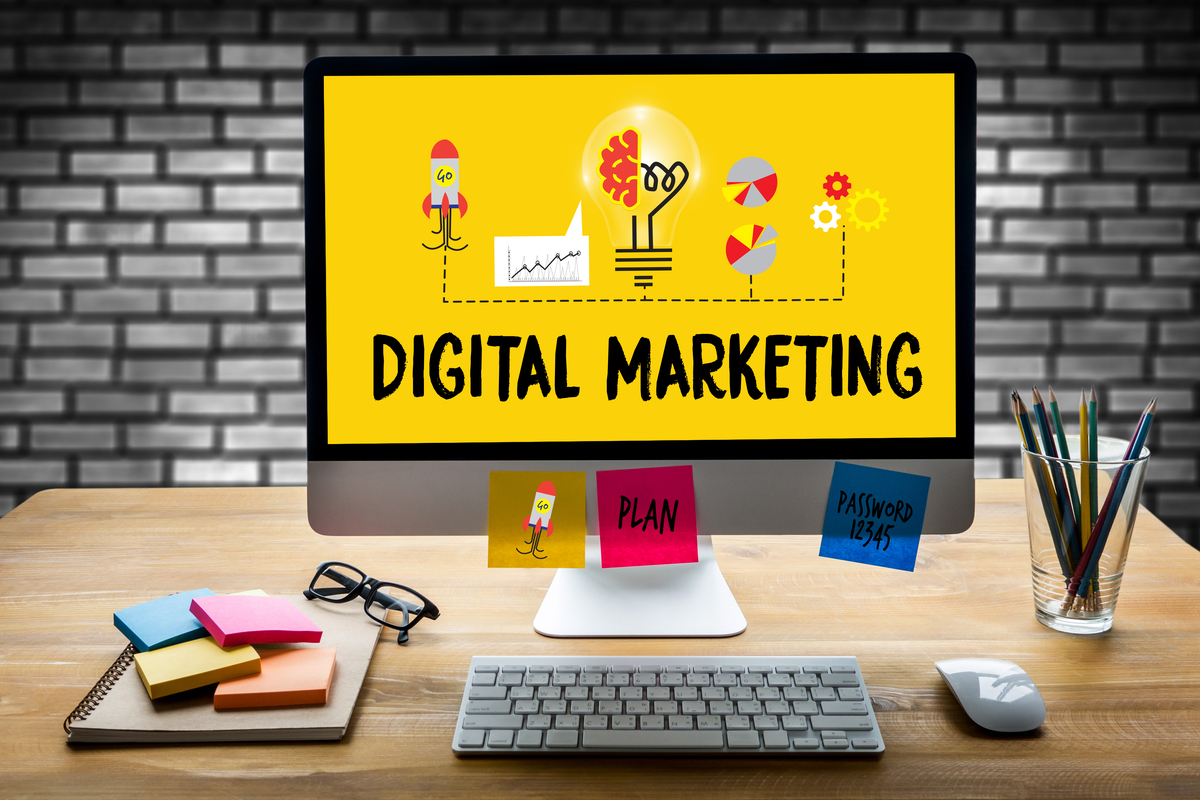
Whether you’ve decided to build your own company or just need to redefine your goals and strategy to adapt to the market, here’s everything you need to know to create the perfect digital marketing plan.
Analyze your position
As easy as it may seem, understanding your company and its current position might actually be harder than you think. It’s easy to get carried away with our dreams. However, we have to transform dreams into realistic goals.
Be honest about where you are now and realistic about where you’d like to be. Think about what you’ve already achieved: your current position, assets and capabilities. Figure out your potential and think about the things that you can start improving. What do you have? What can you do to be where you want?
Define your goals

After identifying your current position and capabilities, think about what you want to achieve in the short to medium term. This way, you can start planning a strategy with a realistic approach and it will be easier to focus on specifics.
Do not lose sight of your big dream, but think about it as the consequence of many little victories. Your short- and medium-term goals are milestones along the way to reaching your long-term objectives.
Understand your audience
Who are they? Where are they? What do they need? What can you do for them? Try to build buyer personas, for example. Use your knowledge and data to start defining them, adjusting and reshaping your personas to become a more accurate depiction of reality.
Once you’ve genuinely understood their characteristics, needs and desires, you will know more about where to find them and how to approach them.
Define channels and actions
Now you have to make it happen. Think about what you do when you want to buy a product or a service. It’s always a process, and it almost always happens across several devices and channels.
Maybe you saw an ad on TV or a banner. Then you looked for more info on the Internet. You found a blog, compared reviews and bought what you wanted. Since you liked the product or the service, you also subscribed to the newsletter to know more about how to use it and stay up-to-date. Your audience behaves exactly the same.
You have to be present throughout the whole customer journey. This means defining what channels are key for you and the specific actions that you need to perform on them. Multiply your chances of exposure and engagement by multiplying channels.
Think about your assets
Do you have everything you need to take action? Pull together all of your assets and organize your processes accordingly. Try to simulate specific situations to test them. Does your marketing plan work? Is there anything you’re missing? Can you see any weak spots, alternatives or opportunities?
Finding the best use for every asset is key. Also, identifying weak spots and strengths is the first step to developing contingency plans.
Set timing and budget
How long do you need to reach your goals and how much is this going to cost you? It’s possible that moving forward on your planning has made you realise that you need more money or more time to make things happen. That’s totally OK. Some businesses later find themselves in difficult situations because they were not able to foresee that their assets were insufficient to successfully develop their plan. Adjust details now to avoid unpleasant surprises later.
Have a contingency marketing plan
On the one hand, your marketing plan is ready to be implemented, but things don’t always work as planned. If there’s something that COVID-19 taught us, it’s that everything can change in an instant. We can’t predict the future, but we will certainly be in a safer position if we think about different negative scenarios.
How can I better leverage my assets for my marketing plan?
It’s important to organize your assets and identify your weak spots and strengths. This will allow you to see where you’re lacking and what alternatives you have.
How do I set my marketing goals?
Keep in mind that your goals need to be realistic and do-able depending on your current position and capabilities. Don’t forget to plan for the short, medium and long term.










